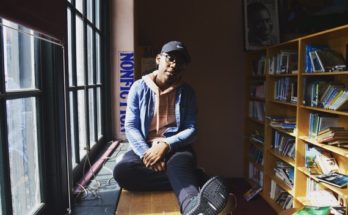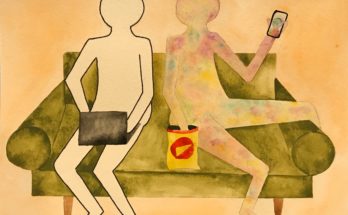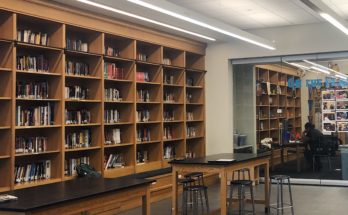It’s 9:30 in the morning and the students in Room 315 are energetic, talkative and breaking about a dozen school rules. Phones are out and curse words flow freely.
Six students, ages 14 to 17, occupy this small classroom at Lyons Community School in Brooklyn. There are no desks, no teacher’s podium. Instead, there is a large table in the middle of the room. Decorations line the walls. And against one wall is a side table, atop of which sits a coffee maker and a 3D printer. The room is hot, and the back window is cracked to let the cool February air drift inside.
Jesse Alexander is 33 and the teacher of this rambunctious room, along with his co-teacher Peter Litman. Last year, these students were spending more time with teaching aides and wandering the hallways than in the classroom. Some of the students are now repeating a grade as a result.
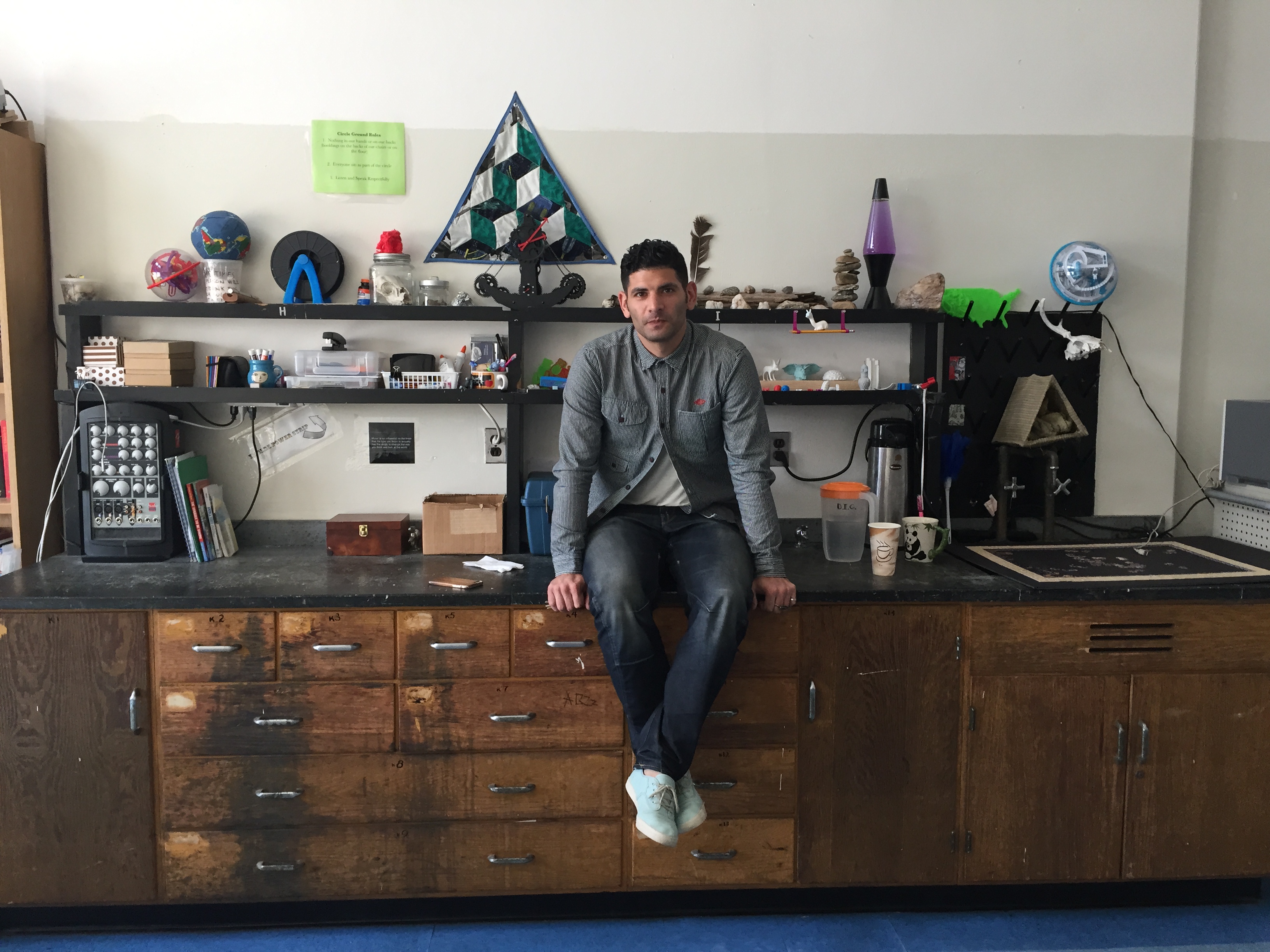
Lyons does not rely on out-of-school suspensions to discipline students, so the school has been on an endless search for alternatives. This classroom, known as the DIG, is the latest attempt. It’s a designated classroom, with two full-time instructors, where the most disruptive students go for about half of the school day. The goal is to provide the students with a safe space where they can, at the very least, develop stronger social skills and stabilize enough to return to regular classes.
But the daily experience in this classroom suggests that when it comes to helping troubled students succeed, there are no easy solutions. While these students are coming to school consistently, virtually no academic work gets done. The atmosphere is carefree and relaxed, the class unstructured. The students act like kids at camp, teasing each other, talking over one another, sketching, sewing, and, occasionally, writing in their journals or completing a handout. But nothing else was working, so Lyons took a chance and experimented, trying its best to find a way to keep students in school.
Rising suspension rates have been alarming education leaders and other advocates across the country, including in New York. A report compiled by UCLA’s Civil Rights Project found that over 3 million K-12 children were suspended from school in 2009-10. Three million students is about the number it would take to fill every seat in every major baseball park, combined with every NFL stadium, in America.
Given the rise in suspensions, there has been national momentum to curb the trend and seek alternatives. Many schools are turning to restorative justice practices as well as social and emotional leaning and development. Lyons was founded on these principles. But even with these practices, some Lyons students still struggle in the classroom. Alexander says that many of the students in the DIG would have dropped out if not for this class.
“The theory behind the DIG is that we care about them enough to give them lots of resources. The school is putting a lot of money into a small amount of children,” Alexander says.
In recent years, more and more students are being suspended for minor infractions, like not wearing the right uniform or chewing gum in class. The New York Civil Liberties Union reported that serious infractions make up 1.3 percent of reported suspensions, meaning the majority of suspensions are administered for minor violations. According to the Dignity in Schools Campaign, more than 15,500 students are suspended under the infraction known as B21, or “defying or disobeying authority,” which is vague and could include any number of behaviors.
In February, Mayor Bill de Blasio and Chancellor Carmen Farina announced a series of long-awaited reforms to the school discipline code, including new policies intended to reduce suspension rates and add funding for restorative justice programming. De Blasio’s new policy will require principals to get permission from the D.O.E’s Office of Safety and Youth Development before suspending students in early elementary grades for any reason, and before suspending older students for minor infractions like “defying authority.” The revisions will also eliminate suspensions for minor physical altercations.
The proposed reforms came after months of calls for revised discipline policies from City Council members and advocates. That call was amplified when several City Council members sent a letter to de Blasio and Farina in early February calling for lower suspension rates for minority students. And at a State of the City address later in the month, City Council Speaker Melissa Mark-Viverito said she would push for reduced student suspensions.
However, advocates feel the proposed revisions do not go far enough, saying that “defying authority” should be disposed of all together. Still, the proposed changes are intended to push schools to use suspensions as a last resort, and to find alternative and restorative ways to discipline students.
Lyons champions its restorative justice programming, which empowers students to resolve conflicts through discussion and other exercises. Lyons’ staff is committed to taking care of the whole child, not just his or her academic performance. But there are still students who cross the line. One student in the DIG was suspended a number of times last year: once for shoving a teacher who took his skateboard away and another time for detonating a stink bomb in the hallway. To handle these students, staff members at Lyons brainstormed alternatives at a ninth-grade team meeting.
“We were trying to figure out what to do with the hold-overs,” Alexander said, “and what really made sense for them.” The DIG is the fourth iteration of similar attempts at Lyons, but just the second time the school has designated a special class for students at risk of dropping out of school.*
“The main goal of the DIG is not to reduce suspensions, though that should be a natural result of what we’re doing,” Taeko Onishi, the principal, says. “The goal is to meet the needs of the children and the community.”
Onishi says the DIG is not successful yet. “But we’re making some breakthroughs and connections,” she said. “And it’s so much better this year than last year.” School just wasn’t working for these students, she says. And when something is not working for her students she tries something else.
“[The DIG] isn’t the answer, it’s part of the journey,” she said. “We owe it to them to try.”
While it’s unclear whether the DIG is an effective way to reintegrate troubled students, Lyons is ahead of the curve when it comes to restorative justice. Students are presented with a myriad of disciplinary options. If a student misbehaves, he might receive a 15-minute lunch detention. If the student doesn’t show up to that, he will be given an hour detention after school on Thursday. If he misses that, he will be given an in-school mentoring session where he follows a 12th grader around all day on Friday.
Other infractions could result in a “justice panel,” where a student will receive a punishment based on his peers’ recommendations. Punishments might include writing an essay explaining why the infraction was wrong, or apologizing to a teacher or student. Lyons also champions peer mediation and peer mentoring as ways to work with students instead of just suspending them. The hallways at Lyons are plastered with signs saying things like, “This all could have been solved with a mediation.”
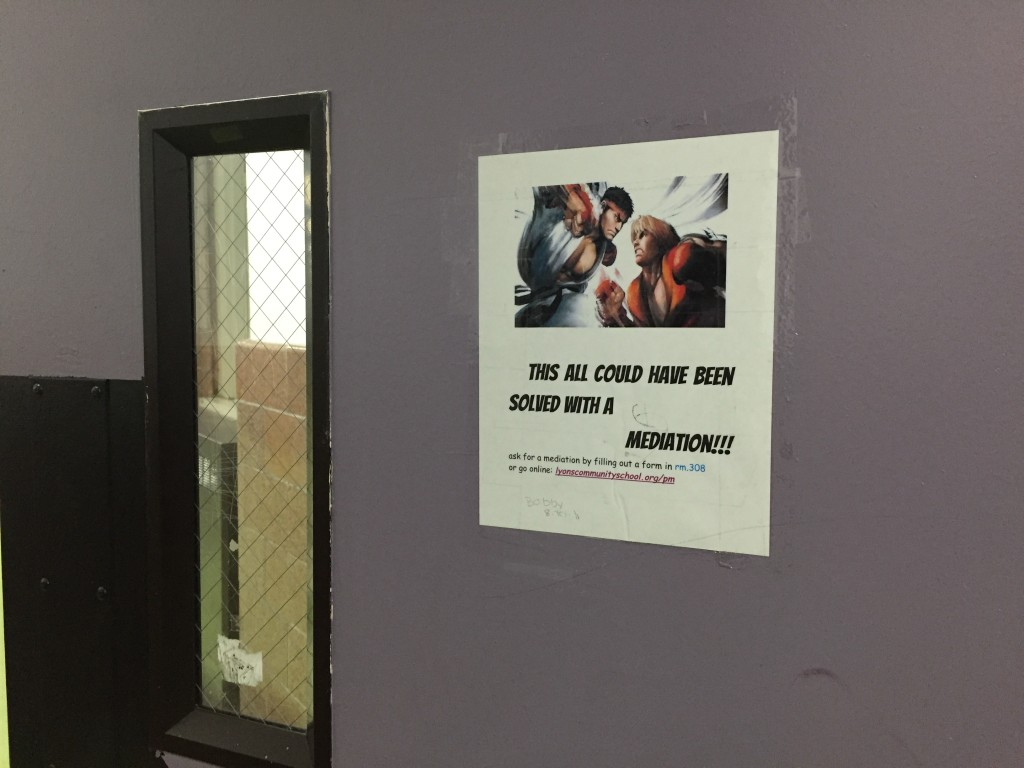
According to Daniel Losen, the director of the Center for Civil Rights Remedies at UCLA, reducing suspensions is not as complicated as it’s made out to be. He says there are many schools that really do use suspensions as a last resort. But schools with low resources, Losen says, have adopted a dangerous mentality: the disruptive students should be kicked out so the “good” students can learn; and resources should only be spent on the children who behave.
Schools that adopt this mentality often suspend students for small infractions like dress code violations, using cell phones in class, or missing school. But suspending students, Losen says, doesn’t actually deter them from misbehaving. Instead, suspensions increase the chance that a student will be suspended again. Additionally, there are costs to the community that are often not taken into consideration. When a child is suspended, the parent must choose between going to work and staying home to supervise the child. Consequently, most suspended students go unsupervised and end up getting into more serious trouble. According to Losen, there is a strong correlation between students being suspended and ending up in the juvenile justice system. The American Civil Liberties Union calls this the ‘school-to-prison pipeline.’
Many low-resource schools, however, have found ways to reduce suspensions for small infractions. Losen says there are actually hundreds of successful examples of this. Social and emotional learning and de-escalation skills training for staff and students have been shown to lead to fewer incidents of misbehavior and higher safety ratings in schools. Dewey Cornell, an education professor at the University of Virginia, found it was possible to distinguish between students who posed an actual threat and students who were merely acting out, but were unlikely to cause real harm. Using his threat assessment, teachers could suspend only those students who were likely to physically harm others.
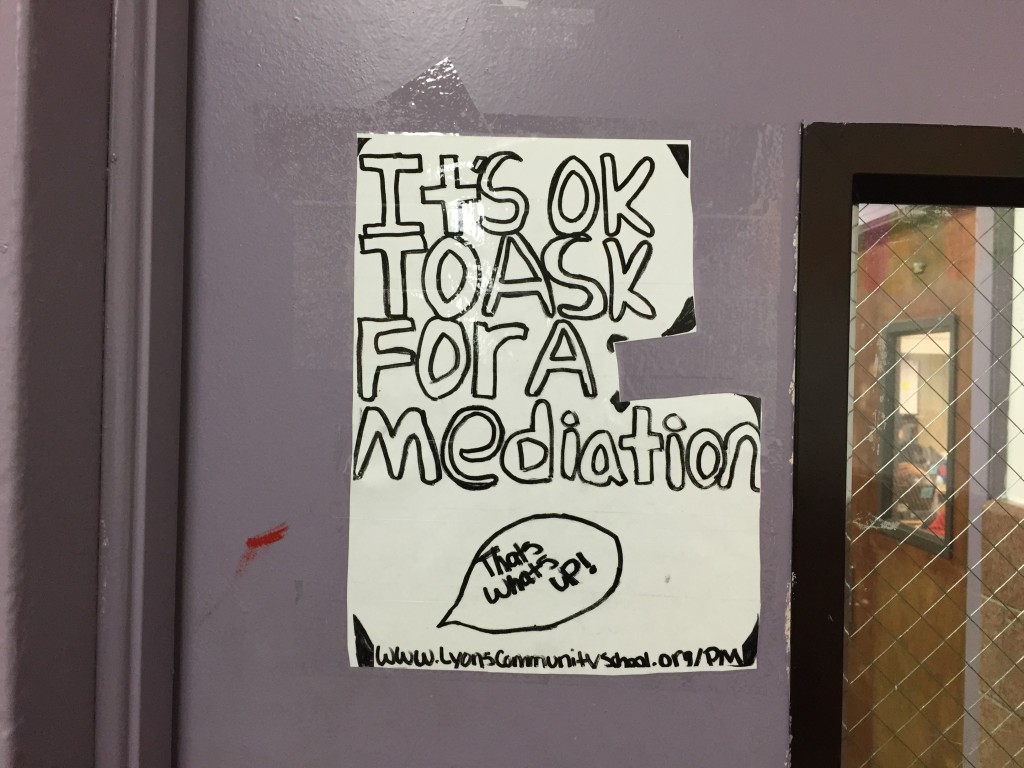
One of the most successful ways to reduce unnecessary suspensions is through restorative justice practices, which many New York public schools have already adopted. But even Lyons has difficulties. According to Lyons teacher David Bally, who teaches Global Studies, it’s especially difficult for incoming ninth graders. Bally explains that students who start in sixth grade have more time to adjust to Lyons’ approach. But those who enter the school in ninth grade, experience a steep learning curve.
While Bally is glad his students are receiving social and emotional care, he worries that they are not being held accountable academically. And sometimes, the restorative justice practices can detract from classroom instruction. For example, students who elect to be peer mediators can be called out of class at any time to conduct a peer mediation session.
Bally is not the only one who is concerned. Alexander is also not sure how much the DIG is helping his students when it comes to academics.
“I feel bad that academically, they’re probably getting less done than they would in other classes,” he says. “But really, how much would they be in those other classes?”
But, Onishi says that some students need to work through their social and emotional troubles before they can succeed academically. And Alexander says he knows that his class is helping students with their social and emotional skills.
One student said Alexander and his co-teacher Peter Litman have helped a lot of students through tough times. “A lot of persons have problems at home, and we always have either [Alexander] or [Litman] to talk to at all times,” he says.
One morning, a student flipped through her journal and came across an entry about her father, who left her mother before she knew him. “Oh this is the day I met my father,” she said, followed by a number of expletives describing the man. Alexander asked the girl if she wanted to write about him in her journal. She — colorfully — declined. “It would help you sort out your feelings,” he says. Eventually, she caved. She wrote that she missed her father and wished she was in his arms.
While the students do enjoy the class, they sometimes express a sense of frustration. One student said she felt that being in the class meant she was stupid. Additionally, the DIG is fairly unstructured and occasionally students find themselves wanting to do more work than there is opportunity to do. And, of course, when Alexander has a detailed lesson plan, the students tend not to be receptive.
Still, one student said if it weren’t for the DIG, he probably wouldn’t go to class . “At the DIG, there’s a lot of support. They try to get you back in class and help you so you in a good track for next year,” he says.
Lyons feels having these students in school is better than sending them home, unsupervised, or letting them aimlessly wander the hallways of school.
“If we weren’t doing this,” Alexander says, “I know that every single one of them would have had at least one long-term suspension this year.”
*This article has been corrected to note that the DIG is the second time Lyons has designated a special class for students at risk of dropping out of school, not the first.

